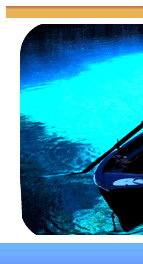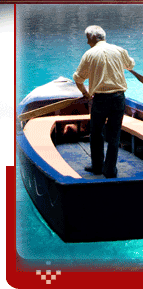Blue Caves: World's Most Magnificent Underground Wonders
Step into nature's most spectacular light show—where sunlight transforms ordinary sea caves into ethereal chambers glowing with impossible shades of blue. Blue caves represent some of Earth's most magical phenomena, where physics and geology conspire to create experiences that seem almost supernatural. From the legendary Blue Grotto of Capri to the unique partially-collapsed wonder of Melissani Cave in Greece, these natural theaters of light continue to captivate millions of visitors seeking encounters with the extraordinary.
🌊 Blue Cave Quick Facts
What Creates Blue Light: Sunlight entering through underwater openings
Best Viewing Time: Sunny days, 11am-2pm optimal
Most Famous: Blue Grotto, Capri (since Roman times)
Most Accessible: Melissani Cave, Greece (year-round tours)
Physics: Water filters red light, reflects blue wavelengths
The Science Behind the Blue Magic
The otherworldly blue glow that defines these caves results from a precise interplay of physics, geology, and lighting conditions that few natural phenomena can match. Understanding this process transforms appreciation from simple wonder to genuine awe at nature's sophisticated optical engineering.
Sunlight entering blue caves follows a specific pathway that creates their signature illumination. When sunlight hits the water surface above a submerged cave opening, it undergoes refraction as it passes from air into water. The water acts as a natural filter, absorbing red wavelengths while allowing blue light to penetrate deeper. This filtered blue light then travels through the underwater entrance and reflects off the limestone cave floor, which acts like a massive mirror, amplifying and diffusing the blue illumination throughout the chamber.
The intensity and hue of blue varies with several factors: water depth at the entrance, size of the underwater opening, angle of sunlight, and clarity of the water. Perfect conditions create what photographers call "electric blue"—an almost artificial-looking intensity that makes the water appear to glow from within.

⚠️ Optimal Blue Cave Viewing Conditions
• Weather: Clear, sunny skies essential for maximum blue effect
• Timing: Late morning to early afternoon (11am-2pm)
• Season: Spring through fall (winter often inaccessible)
• Water: Calm seas for safe boat access and clear reflections
• Moon Phase: Some caves offer night experiences during full moon
World's Most Spectacular Blue Caves
Each blue cave offers a unique interpretation of this natural phenomenon, shaped by local geology, accessibility, and cultural significance. From intimate grottos accessible only by lying flat in rowboats to expansive chambers where entire tour boats navigate comfortably, these destinations represent the diversity possible within this singular natural occurrence.
1. Blue Grotto (Grotta Azzurra), Capri, Italy - The Original Wonder
The Blue Grotto's fame spans millennia, having served as Emperor Tiberius's private swimming pool during Roman times before being "rediscovered" by German poet August Kopisch in 1826. This limestone sea cave on Capri's northwest coast remains the most celebrated blue cave worldwide, setting the standard against which all others are measured.
Entry requires transferring from larger boats to small wooden rowboats, then lying flat as skilled boatmen navigate through an opening barely one meter high. Inside, the 50-meter chamber reveals water so intensely blue it appears otherworldly. The effect comes from sunlight passing through a 10-meter underwater opening that sits directly beneath the cave mouth, creating perfect conditions for the filtering process that produces the signature blue glow.
The grotto's silver reflections, caused by tiny air bubbles coating underwater objects, add an extra dimension of magic. Visitors often describe the experience as floating through liquid sapphire, with the cave walls seeming to pulse with living light. However, popularity means crowds and weather dependency can affect the experience—winter closures and summer queues require careful planning.
Visiting Details: Best accessed via boat tours from Marina Grande or bus from Anacapri (€150 average for 2-hour tours). Entry requires separate rowboat fee. Peak season brings significant crowds; early morning or late afternoon visits recommended.

2. Blue Cave (Modra Špilja), Biševo Island, Croatia - The Adriatic Gem
Croatia's answer to Capri offers a more intimate blue cave experience on the remote island of Biševo, near Vis in the Dalmatian archipelago. This limestone grotto showcases the same physics as its Italian counterpart but within a less commercialized setting that allows for deeper connection with the natural phenomenon.
The cave's turquoise blue illumination occurs when sunlight enters through an arched opening in the roof, reflecting off the limestone seabed to create a hypnotic glow throughout the chamber. What distinguishes the Croatian Blue Cave is its integration into multi-island tour packages that often include swimming opportunities and exploration of the 24 other caves carved into Biševo's limestone coastline.
Recent tourism development has made this cave increasingly accessible, with regular boat services from Split, Hvar, and Vis during favorable weather. The experience feels more adventurous than Capri, often involving zodiac boats and smaller group sizes that enhance the sense of discovery. The surrounding Adriatic landscape provides dramatic context, with crystal-clear waters and uninhabited islands creating a pristine environment.
Visiting Details: Accessible via boat tours from major Dalmatian coast cities. Tours typically combine multiple islands and often include swimming stops. Season runs May through October, weather permitting.
3. Melissani Cave, Kefalonia, Greece - The Unique Skylight Cave
Unlike traditional blue caves where sunlight enters through underwater openings, Melissani Cave presents a unique variation—a partially collapsed underground lake where sunlight streams directly through an opening in the chamber roof. This geological anomaly creates a blue cave experience accessible year-round with reliable weather conditions.
The cave's partially collapsed ceiling transforms the experience from mysterious darkness to ethereal illumination. When midday sun streams through the 30-meter opening, it creates dramatic spotlighting effects on the underground lake's turquoise waters. The combination of direct sunlight and the lake's mineral-rich composition produces blue tones that shift from electric azure to deep sapphire as clouds pass overhead.
Melissani's accessibility sets it apart from more challenging blue cave destinations. Guided 15-minute boat tours operate regularly, with knowledgeable local guides explaining both the geological formation and rich mythology associated with the cave. The stable tour schedule and weather independence make this ideal for families or travelers with limited time for weather-dependent destinations.
Visiting Details: Open year-round with regular boat tours. Adults €10, children €5. Tours run approximately every 20 minutes during peak season. Easily combined with nearby Drogarati Cave for comprehensive cave experience.
Photography Guide: Capturing the Blue Magic
Photographing blue caves challenges even experienced photographers, as the extreme contrast between bright cave entrances and dark interiors requires specific techniques to capture the ethereal blue glow that makes these destinations so spectacular.
Camera settings require careful balance between preserving the blue color saturation and managing the challenging lighting conditions. High ISO settings (800-3200) become necessary due to low light levels, while fast shutter speeds prevent motion blur from boat movement. The key lies in underexposing slightly to maintain the rich blue tones while avoiding the blown highlights that can destroy the magical atmosphere.
Timing plays a crucial role in blue cave photography. The optimal window typically occurs between 11am and 2pm when sun angle maximizes light penetration through underwater openings. During these hours, the blue effect reaches its most intense, providing the dramatic contrast that makes photographs truly spectacular. Cloudy conditions can diminish or eliminate the blue effect entirely, making weather monitoring essential for photography-focused visits.

📸 Blue Cave Photography Pro Tips
• Equipment: Waterproof housing essential for boat spray
• Settings: Manual mode, ISO 800-3200, fast shutter speed
• Composition: Include cave walls for scale and context
• Timing: Midday sun angle optimal for blue intensity
• Backup: Smartphone with night mode as secondary option
• Polarizing Filter: Reduces surface glare, enhances blue saturation
Ready to experience the magic of blue caves? Start your journey at Melissani Cave, where Greek sunlight transforms an underground lake into living turquoise, offering one of the world's most accessible blue cave wonders.